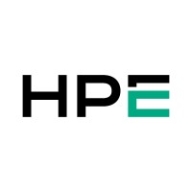

HPE Zerto Software and NetApp AltaVault compete in data management and protection. HPE Zerto Software has the edge in recovery capabilities, while NetApp AltaVault has superior cloud integration.
Features: HPE Zerto Software delivers continuous data protection, easy scalability, and disaster recovery features. NetApp AltaVault is known for efficient data deduplication and seamless cloud storage integration, enhancing storage optimization and cloud harmonization.
Ease of Deployment and Customer Service: HPE Zerto Software offers straightforward deployment with clear instructions and minimal downtime, backed by responsive customer service. NetApp AltaVault has a complex deployment process that requires intermediate storage knowledge, supported by generally helpful customer service that can experience delays.
Pricing and ROI: HPE Zerto Software requires a higher initial investment but offers strong ROI via its robust disaster recovery capabilities. NetApp AltaVault is more cost-effective with a lower initial outlay, providing decent ROI through efficient data management, appealing to those focusing on data storage efficiency.
Before, it was a huge cost. It was several thousand dollars to do a DR test, whereas now, I click a button.
It saves us a lot of time and gives us the ability to perform other DR plans for other systems.
It's not only in the cloud; it's DR as a service, which means that the recovery operations are performed by a dedicated team specializing in this area.
I have never had an issue that was not resolved, and I have never been in a situation where they did not respond.
I would give them a rating of ten because it represents the highest level of support based on the technical knowledge of the support team, response time, and effectiveness of the provided resolutions.
When I open a ticket, I usually get a call within an hour or two.
I would rate it a ten out of ten for scalability.
Customers need to follow good engineering practices for optimal product use.
By adding more hosts and installing VRAs on each, tasks can be efficiently managed.
I promptly delete the malfunctioning elements and set them up again to resume replication, ensuring stability.
The ease of use was so good with Zerto that they were able to migrate things much quicker.
It is very reliable.
If I have 350 objects that I am protecting, I would like Zerto to be able to fire them up in one order, rather than having to manually bring them up in a sequence.
If the host has a lot of VMs on it, there may not always be enough time to relocate all of the VMs from a protection group standpoint to other hosts before the replication appliance that Zerto uses to manage that powers itself down.
If HPE Zerto Software has it built-in where we're going to vCenter and you click on it, it will build the VPG and indicate configuration requirements, that would be amazing.
If you want a good-quality tool that is robust and does a good job for you, you have to pay a higher price to get that, and Zerto is no different.
However, it can become quite expensive when you start looking at the number of workloads you have in the environment and what you would like to do.
Zerto is easier to set up and use, and it's less expensive.
Zerto offers excellent technical support with responsive and helpful experts.
If we were attacked, I could revert to a backup from five seconds before the attack, and no one would know we were attacked.
The replication time and the minor amount of time it takes to sync a new server outside of any of my huge 40-terabyte boxes is ridiculously quick.
There are different integrations available with NetApp AltaVault, such as AWS, Microsoft Azure, Google Cloud, and I want to understand how they impact data security policies in my case.
| Product | Market Share (%) |
|---|---|
| HPE Zerto Software | 3.5% |
| NetApp AltaVault | 0.5% |
| Other | 96.0% |


| Company Size | Count |
|---|---|
| Small Business | 92 |
| Midsize Enterprise | 86 |
| Large Enterprise | 193 |
| Company Size | Count |
|---|---|
| Small Business | 5 |
| Midsize Enterprise | 1 |
| Large Enterprise | 10 |
Zerto is used for disaster recovery, business continuity, data migration, and ransomware recovery, providing continuous data protection and near real-time replication. Valued for ease of use, efficient failover processes, and versatile integration, it enhances organizational efficiency, reduces errors, and boosts productivity.
NetApp AltaVault is a cloud-integrated storage solution created to increase recovery capabilities and lower cost and risks. It is better than traditional backup and recovery solutions because they are considerably slower, more expensive, risky, and can be too complex for the comprehension of many users. NetApp AltaVault solves issues related to backup, archival, and restoration. Compared to on-premises solutions, this software claims to be up to 90% less expensive while solving multiple issues related to data storage in the cloud. AltaVault presents three solutions to its customers: backup and recovery, cold storage and archives, and disaster recovery.
1. NetApp’s backup and recovery solution works with Kerne-Based Virtual Machine, Microsoft Hyper-V, and VMware vSphere, creating a solution for mid-sized businesses as well as for bigger companies that want to protect their offices in different locations. The usable local cache capacities of this solution range from 32TB to 383TB, providing clients with enough storage for their important data while giving them the option to retrieve it if something goes amiss.
2. NetApp AltaVault can be configured in cold storage mode and used for data that is not often used. The solution is scalable, thus allowing minimal costs for operating with cold data and allowing fast access to it at the same time.
3. AltaVault offers disaster recovery for Amazon Web Services (AWS) and Microsoft Azure. Your data will be secured on the cloud, providing you with a secure backup if the need for disaster recovery arises.
NetApp AltaVault’s many valued features include:
The benefits of using NetApp AltaVault include:
A Pre-sales Manager at a computer software company says NetApp AltaVault has fair pricing with a good GUI and a straightforward setup.
We monitor all Cloud Backup reviews to prevent fraudulent reviews and keep review quality high. We do not post reviews by company employees or direct competitors. We validate each review for authenticity via cross-reference with LinkedIn, and personal follow-up with the reviewer when necessary.